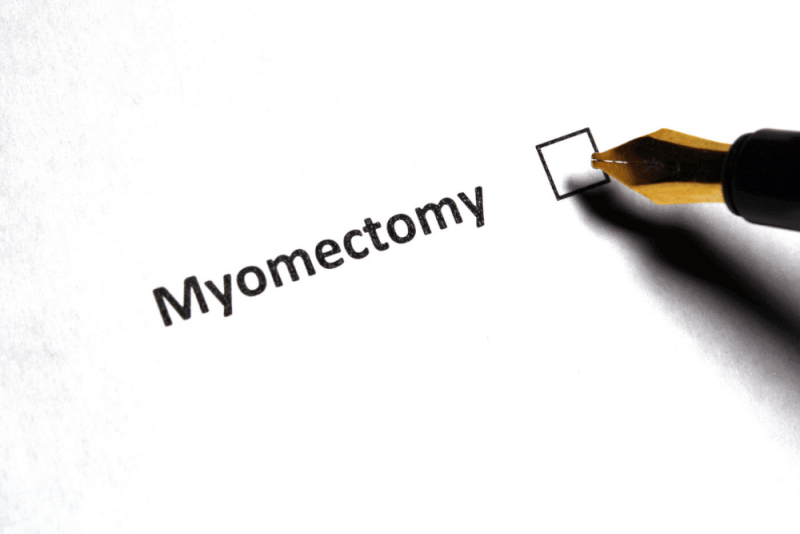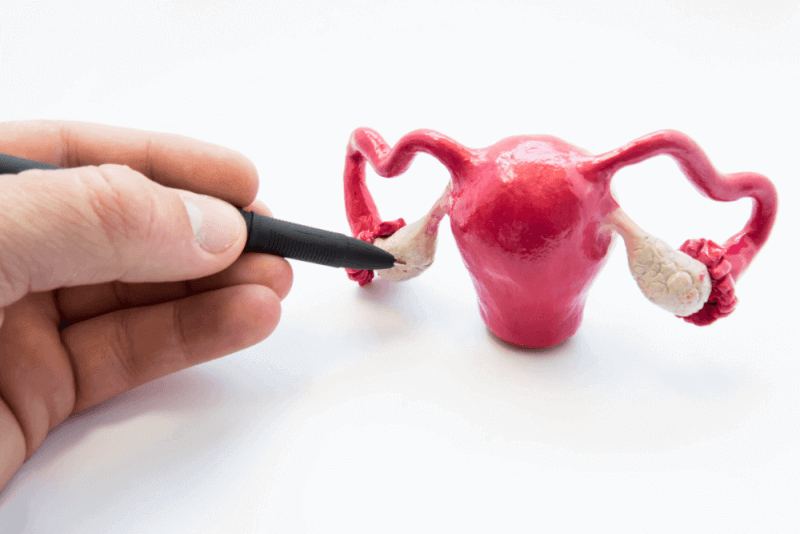What is myomectomy?
The surgical procedure to remove uterine fibroids is called myometomy. These fibroids are common but not cancerous. Uterine fibroids usually develop during the childbearing years.
During a myomectomy, the surgeon's goal is to remove the fibroids causing the symptoms and rebuild the uterus. Unlike a hysterectomy, where the entire uterus is removed, this procedure removes only the fibroids. Women who have had a myomectomy experience a reduction in the symptoms caused by fibroids, including heavy menstrual bleeding and a decrease in referic pressure.
Causes of myomectomy
Myomectomy is recommended for fibroids that cause symptoms that cause patients discomfort or affect normal activities. Among the reasons why Myomectomy is preferred over hysterectomy for uterine fibroids in patients who need surgery are the following.
- Wanting to have children
- Expert suspects that uterine fibroids may interfere with fertility
- The womb wants to be protected
Complications of myometomy
Myomectomy has an extremely low complication rate, but presents a unique set of challenges. The risks of myomectomy include the following.
Severe blood loss
Most women with uterine fibroids already have low blood counts due to heavy menstrual bleeding. For this reason, the risk of having problems due to blood loss is higher in this surgery. Ways to increase blood counts before surgery are recommended to ensure that the necessary precautions can be taken.During the procedure, surgeons take extra steps to prevent excessive bleeding.
These include using tourniquets and planks to block blood flow from the uterine artery and injecting medication around the fibroids to constrict the blood vessels. However, a significant number of these steps do not reduce the need for contraception. Studies on hysteroscopy and myomectomy show that there is more blood loss.
Scar tissue
Incisions made into the uterus to remove fibroids can lead to adhesions, which are bands of tissue on the floor that can develop after surgery. Performing the procedure laparoscopically may result in fewer adhesions.
Pregnancy or childbirth complications
If you become pregnant after a myomectomy, there are increased risks. If the specialist needs to make a deep incision into the uterine wall, a cesarean section should be recommended to prevent uterine rupture, a rare complication in the next pregnancy. Fibroids themselves may also be associated with complications during pregnancy.
Risk of hysterectomy
Although rare, in cases where bleeding cannot be controlled and there are other abnormalities in addition to fibroids, it may be necessary to cancel the myomectomy and perform a hysterectomy.
Probability of cancerous tumor spread
Another rare complication of the procedure is that a cancerous tumor can be mistaken for a fibroid. During the removal of the tumor, it is possible for the cancer to spread if it is cut into small pieces and removed through a small section. This risk increases after menopause and as women get older.
Strategies to prevent complications before myomectomy surgery
Strategies that can be implemented to minimize the risks of myomectomy surgery include the following.
Iron supplements and vitamins
People with iron deficiency anemia due to heavy menstrual periods should use iron supplements and women should use iron supplements that will allow them to increase their blood count before surgery.
Hormone therapy
Another strategy for correcting anemia in patients is hormone therapy before surgery. This may involve prescribing gonadotropin-releasing hormone agonists, birth control pills or other hormonal medications to stop and reduce menstrual flow. If hormone therapy is given over the phone, the hormone agonist stops menstruation by blocking the production of estrogen and progesterone, allowing immediate rebuilding of globin and iron stores.
To shrink fibroids
Some hormone therapies can also shrink fibroids and the uterus enough to allow a smaller, horizontal incision to be made instead of a vertical one. In addition, some studies show that GNRH agonist therapy can shrink fibroids over time and reduce bleeding enough to not require surgery.
However, GNRH agonist treatment can cause menopausal symptoms such as hot flushes, night sweats and vaginal dryness. These symptoms stop when the medication is stopped. Treatment usually takes place a few months before surgery.
How to prepare for myometry surgery
The patient should stop consuming food and drink some time before the operation. The doctor's advice on this subject should be followed. People who use medication should ask the doctor whether they should change the drug superiority in the days before the operation.
After surgery, patients can be discharged or hospitalized. How long the patients will stay in the hospital varies depending on the method used. In order to make the necessary preparations, it is necessary to know how long hospitalization will be performed before the operation.
Myomectomy surgery
The procedure for myomectomy surgery varies depending on the size, number and location of the fibroids. There are 3 different methods for this procedure.
Methods of myomectomy surgery
Myomettoma surgery methods are divided into three. Some of these methods are minimally invasive methods and some of them are imamosive methods.
Laparoscopic or robotic myomectomy
Laparoscopic or robotic Myomectomy, both minimally invasive procedures, the surgeon accesses and removes fibroids through the small abdominal pouch.
Thanks to laparoscopic surgery, patients experience less blood loss. In addition, hospitalization and recovery time are shorter. Postoperative complications and adhesions are significantly reduced. There are limited comparisons between laparoscopic and robotic myomectomy. Robotic surgery may take longer and be more costly. But otherwise there is little difference between the two methods.
Laparoscopic myomectomy
In these operations, the surgeon makes a small incision through or near the belly button. A laparoscope is then inserted into the abdomen and the surgeon performs the operation with instruments inserted into other small incisions in the abdominal wall.
Robotic myomectomy
As with laparoscopic myomectomy, the instruments are inserted through small incisions and then the movement of the instruments is controlled from a separate console. Some surgeons perform single-port laparoscopic and robotic myomectomy.
Sometimes the fibroids are broken into pieces and removed through a small incision in the abdominal wall. Other times, the fibroids are removed through a larger incision in the abdomen so that they can be removed without breaking into pieces. Rarely, fibroids can also be removed through an incision in the vagina.
Abdominal Myomectomy
In this procedure, called a laboratomy, the surgeon makes an open incision in the abdomen to access the uterus and remove the fibroids. This incision is made horizontally whenever possible. Vertical incisions are also needed for larger uteruses.
Sisteroscopic Myomectomy
To treat smaller fibroids that protrude significantly in the uterus, the surgeon may recommend a hysteroscopic myomectomy. In this surgery, the surgeon accesses and removes the millions using instruments inserted into the uterus through the vagina and cervix.
Hysteroscopy Myomectomy usually follows these steps.
- The surgeon inserts a small lighted instrument through the vagina and cervix into the meridian. He or she commonly uses a wire ring resectoscope to cut the tissue using electricity, or a hysteroscopic morcellator to cut the fibroid with a knife.
- The mercy is injected with a clear liquid solution to dilate the uterine cavity and allow examination of the uterine wall.
- Using a surgical resectoscope or hysteroscopic curator, the surgeon shaves pieces of the fibroid and removes them from the uterus until the fibroid is completely removed. Sometimes large fibroids cannot be completely removed in one operation and a second operation is needed.
Life after myomectomy surgery
Myomectomy results include the following.
- Relief of symptoms
- Improved fertility
How is the healing process after myomectomy surgery?
In general, after the operation, the specialist will discuss when patients can return to normal activities. It is important that patients follow the instructions from their doctor so that they can recover. How long patients need to change their activities will vary depending on the type of surgery they have had.
Patients who have had an open abdominal myomectomy need more time. Here are some of the things that can be expected during the recovery process
- Vaginal bleeding and discharge for several weeks
- Not lifting anything heavier than 5 to 10 kilograms in the first week after surgery (in case of open abdominal surgery, this period should be extended)
- No sexual intercourse for 6 weeks after surgery and nothing should enter the vagina during the healing process.
- The disease requires that they gradually increase their activity level. It is important that patients do not suddenly return to their normal activities.








